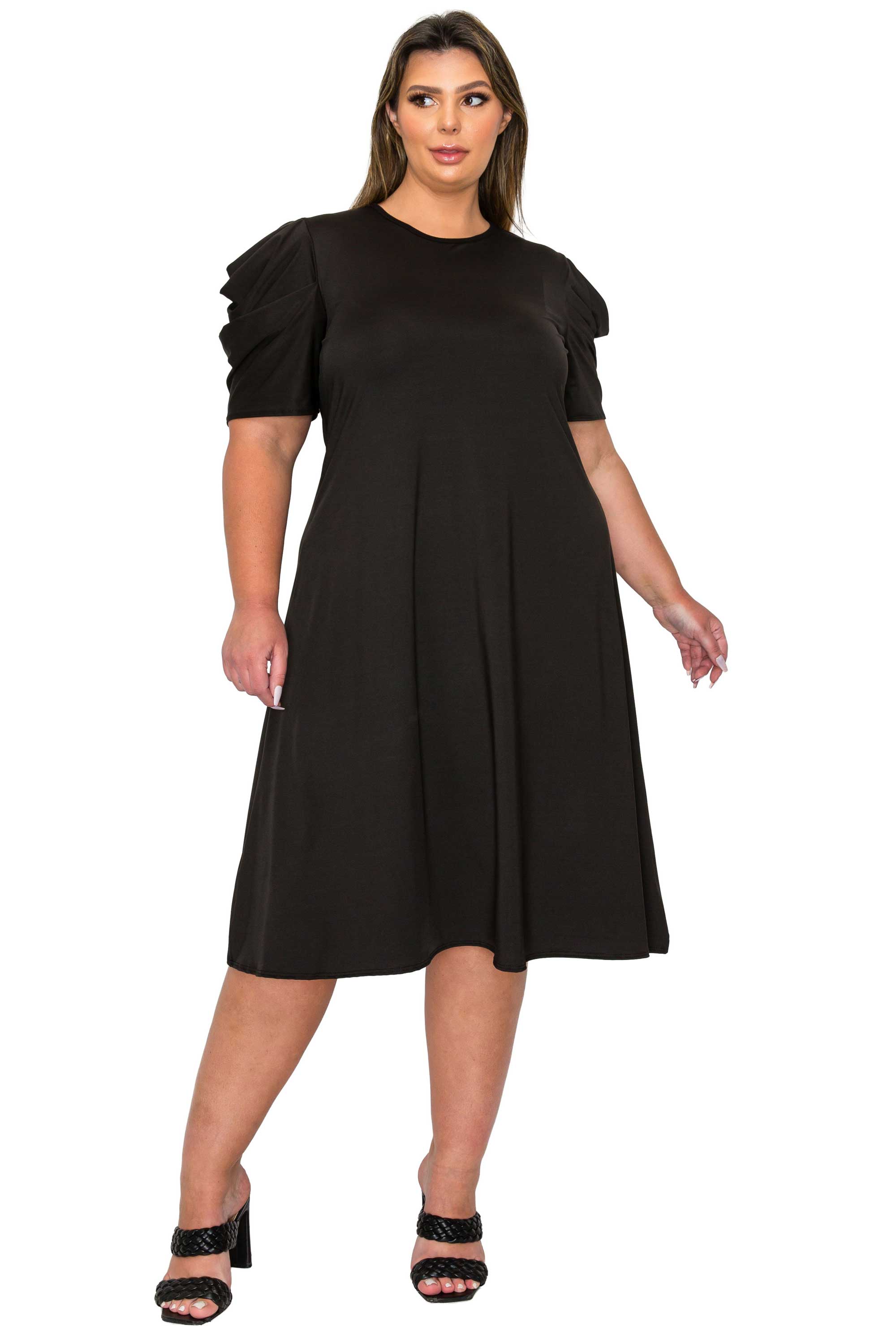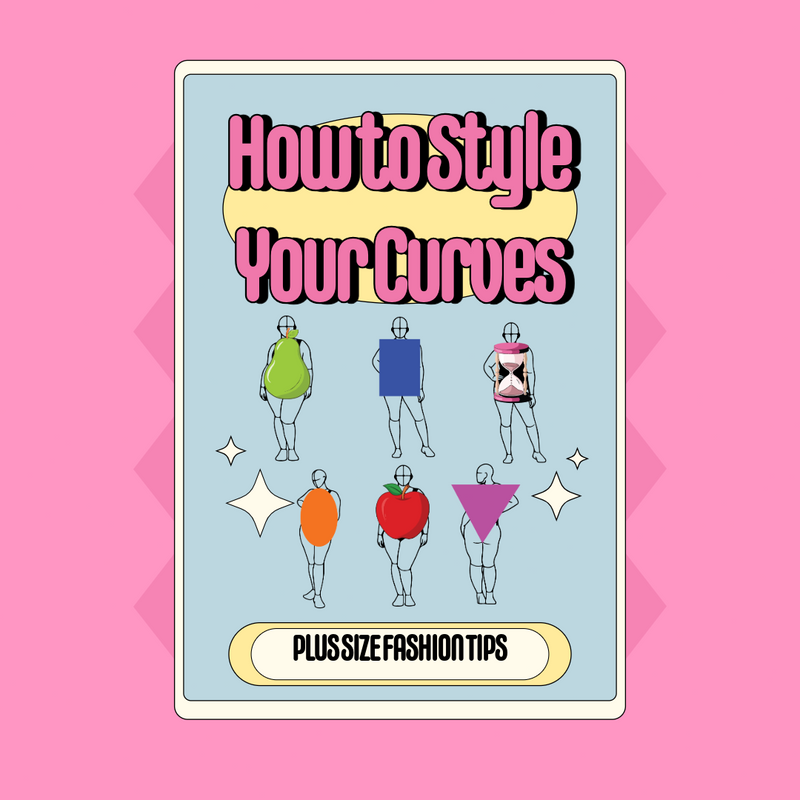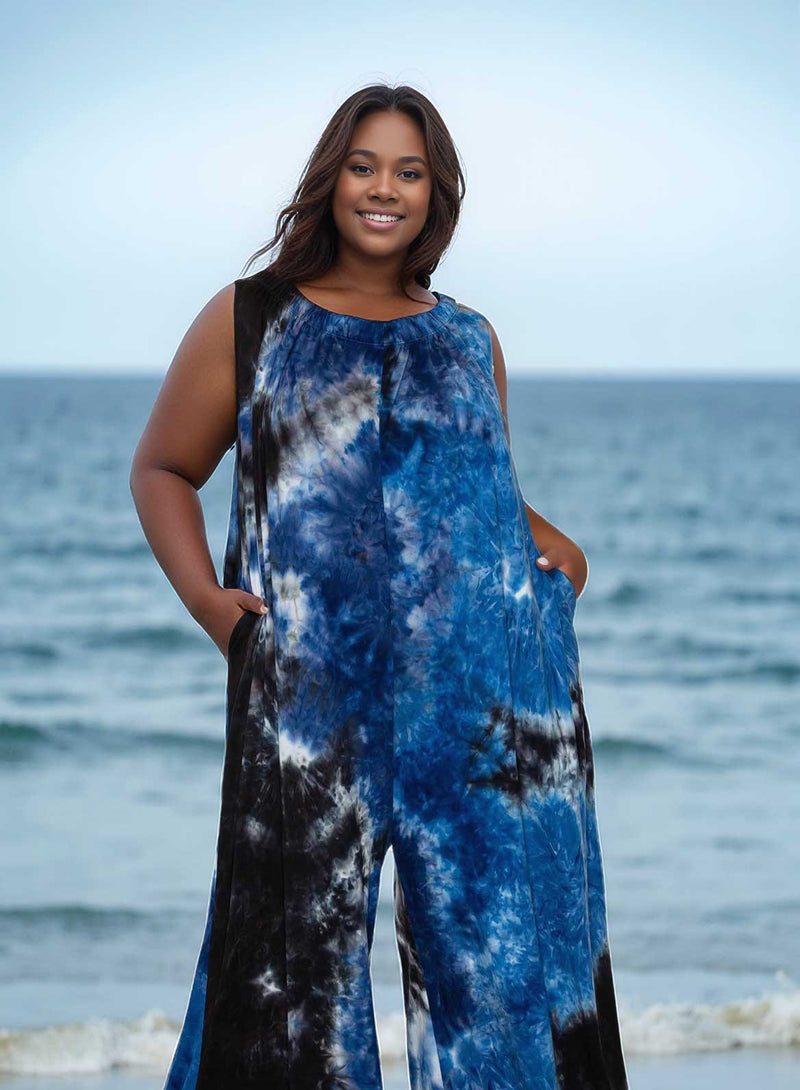
The Shrinking Plus-Size Fashion Market: How the Economy is Limiting Options for Curvy Shoppers in 2025
The fashion industry has made strides toward inclusivity, with body positivity campaigns and expanded size ranges gaining traction. However, as economic challenges intensify in 2025, retailers are scaling back their offerings of plus size dresses and plus size fashion, both in physical stores and online. From the closure of online retailers like Asoph to the slow unwinding of established brands like Fashion to Figure and store closures by companies like Torrid, plus-size consumers are facing fewer choices, raising concerns about the future of size inclusivity in fashion.

A Growing Market Under Economic Strain
The global plus size fashion market remains a significant economic force, projected to grow from USD 333.04 billion in 2025 to USD 504.81 billion by 2034, with a compound annual growth rate (CAGR) of 4.73%. North America, particularly the United States, leads this market, driven by a large population of plus-size consumers—over 68% of American women wear a size 14 or above—and a strong push for body inclusivity. Brands like Lane Bryant, Torrid, and Universal Standard have built loyal followings, while mainstream retailers like Target and Nordstrom have expanded their plus size dresses and apparel to capture this demographic.

Yet, economic headwinds are forcing tough decisions. Inflation, rising production costs, and cautious consumer spending are squeezing retailers’ margins. According to McKinsey’s State of Fashion 2025 report, the fashion industry faces a cyclical slowdown, with revenue growth expected to stabilize in the low single digits. Consumers, impacted by inflation, are prioritizing essential spending, prompting retailers to cut costs. Unfortunately, plus size fashion lines—often perceived as a niche segment—are among the first to be scaled back.
Closures and Unwinding: Asoph, Fashion to Figure, and Torrid
The plus size fashion market is facing a wave of setbacks, with both online and physical retailers downsizing or shuttering entirely. Asoph, an online retailer specializing in plus size dresses and trendy apparel, has reportedly ceased operations in 2025, reflecting the economic pressures impacting e-commerce. While specific details about Asoph’s closure are limited, rising operational costs, supply chain disruptions, and reduced consumer spending likely contributed to its demise. The loss of such platforms limits access to stylish plus size fashion, particularly for shoppers who rely on online retailers for variety and convenience.
Similarly, Fashion to Figure, a well-established brand known for its bold plus size dresses and trend-forward designs, has been quietly unwinding its operations. Once a staple for plus-size women seeking affordable, stylish plus size fashion, Fashion to Figure has struggled since its parent company, New York & Company, filed for bankruptcy in 2020. Its reduced online presence and limited new collections in 2025 signal a slow exit from the market, leaving a gap for consumers seeking vibrant, budget-friendly options.
Torrid, a leading plus-size retailer, announced plans to close up to 180 underperforming stores across the United States by the end of 2025, citing declining sales in certain locations. These closures reduce physical access to plus size dresses and apparel, particularly in regions where online shopping may not fully bridge the gap. As one X user posted, “First, it was Fashion Bug, then Avenue, and now we are gonna lose Torrid stores. Plus-size women are being restricted to online only.”

Why Plus-Size Lines Are Vulnerable
Plus-size fashion lines, including plus size dresses, face unique challenges that make them susceptible to cuts. Producing plus-size garments is often more expensive, requiring more fabric, specialized patterns, and additional design considerations to ensure proper fit. These costs can erode profit margins, especially for brands like Fashion to Figure that target budget-conscious shoppers. Luxury brands often resist expanding into plus size fashion due to these costs and a lingering bias toward “size elitism.” While designers like Christian Siriano have shown that inclusive sizing can triple business, many companies prioritize cost-cutting over long-term investment in this market.
Additionally, plus size fashion is often under-advertised and poorly integrated into retail spaces. Plus-size consumers frequently report feeling unwelcome in stores that prioritize smaller sizes, with extended sizes relegated to online-only offerings or limited sections. This lack of visibility can lead to lower sales, reinforcing the perception that plus size dresses and apparel are less profitable. As one plus-size model and consultant noted, “Companies need to consider how plus-size consumers might feel about shopping somewhere for the first time.”
Economic downturns amplify these challenges. As consumers “trade down” to value-priced items, retailers focus on high-turnover, standard-size inventory that appeals to a broader audience. The plus size fashion market, while significant, is often seen as a riskier investment, leading to reduced inventory, fewer style options, and closures like those of Asoph and Fashion to Figure.
The Impact on Plus-Size Consumers
For plus-size shoppers, these cutbacks are a setback in the fight for representation and access. The closure of Asoph eliminates a key online destination for plus size dresses, while Fashion to Figure’s unwinding limits options for bold, affordable plus size fashion. Torrid’s store closures further restrict in-person shopping, forcing consumers to rely on a shrinking pool of retailers. Plus-size women have long struggled to find stylish, well-fitting plus size dresses that match their personal style. As one stylist noted, “There’s the Rick Owens person, and there’s the Marc Jacobs person, and there’s the Bill Blass person,” yet plus-size customers rarely have access to such diverse aesthetics.
The rise of online shopping has mitigated some challenges, with 82% of consumers aged 26 to 35 making online clothing purchases in the past year. AI-driven tools, such as virtual fitting apps and personalized recommendations, are improving the online experience for plus-size shoppers. However, online-only offerings can’t fully replace the tactile experience of trying on plus size dresses in-store, and shipping costs or delays add frustration. For plus-size consumers in rural or underserved areas, the loss of physical stores like Torrid’s and online options like Asoph is particularly devastating.
A Backslide in Body Positivity?
The downsizing of plus size fashion offerings comes at a time when the body positivity movement is losing momentum on runways. According to the Vogue Business Autumn/Winter 2025 Size Inclusivity Report, 97.7% of looks presented at major fashion weeks were straight-size, signaling a retreat from the diversity celebrated in recent years. The closure of Asoph and the unwinding of Fashion to Figure further underscore this backslide, as plus-size consumers lose access to brands that championed their needs. Plus-size model Tess Holliday has shared how the lack of options in her youth forced her to get creative with thrift stores and men’s clothing—a reality that many shoppers may face again.
Online Options for Plus-Size Fashion
Despite these challenges, several online retailers continue to offer vibrant plus size fashion and plus size dresses for curvy, confident women. Here are some standout options:
- Chic Soul: A boutique offering trendy plus size dresses and apparel with free shipping on orders over $100, focusing on chic styles for confident women.
- Pink Lily: Known for curvy boutique plus size dresses, swimwear, and stylish apparel, Pink Lily celebrates curves with on-trend designs.
- Arula: Formerly A’Beautiful Soul, Arula specializes in extended and plus size fashion, including dresses, jeans, and tops, with a focus on the latest styles. Note that Arula announced its closure in 2025, so shoppers should act quickly to explore their offerings.
- Rebdolls: Praised for its trendy plus size dresses and bold fashion, Rebdolls caters to curvy women with confident, stretchy, close-to-the-body styles.
- Bronzeville Boutique (Chicago, IL): A local favorite with a 3.7-star rating, known for its curated plus size fashion collections, offering sizes S to 3X with exceptional design and premium customer service.
- Allyson Mari (Chicago, IL): A highly rated (5.0 stars) boutique offering stylish plus size dresses and apparel, popular for its personalized approach and sizes 1X to 3X.
- Ms Catwalk (Chicago, IL): A Chicago-based boutique with a 4.8-star rating, celebrated for its fashionable plus size fashion and sizes up to 3X, perfect for the fashionista seeking catwalk-ready looks.
- L I V D: An online boutique for plus size dresses and trendy plus size fashion, L I V D offers cocktail and maxi dresses that turn heads at events or elevate everyday looks. Customer reviews praise the flattering fits, high-quality materials, and vibrant designs, making it a go-to for curvy women seeking style and comfort.

Opportunities Amid the Challenges
The plus size fashion market remains a significant opportunity, with a projected value of USD 532.79 billion by 2034. Retailers that invest in inclusive sizing, sustainable materials, and innovative technologies like AI-driven design can capture loyal customers. Brands like Universal Standard continue to lead, offering sizes from 00 to 40 and prioritizing quality and fit. Collaborations like Adidas and 11 Honoré’s plus-size activewear line show that targeted partnerships can meet specific needs, such as functional sportswear.
Retailers can also learn from past mistakes. Better marketing, inclusive in-store experiences, and robust online platforms could boost sales and build trust. As consumer advocacy for inclusivity grows, brands that prioritize plus size dresses and apparel—rather than treating them as an afterthought—stand to gain a competitive edge.
Navigating the Future
The closure of Asoph, the slow unwinding of Fashion to Figure, Arula’s announced closure, and Torrid’s store reductions reflect the economic struggles facing the fashion industry in 2025, from inflation to shifting consumer priorities. While retailers face tough choices, the demand for plus size fashion remains strong. Plus-size consumers deserve better—more choices, better fits, and a retail experience that celebrates their style and individuality.
As the industry navigates this challenging landscape, brands that double down on inclusivity, leverage technology, and listen to their customers will thrive. For now, plus-size shoppers can explore online retailers like Chic Soul, Pink Lily, Rebdolls, and L I V D Apparel to find plus size dresses and apparel that make them feel confident and empowered. The fight for size inclusivity is far from over, and the economic challenges of 2025 only underscore the need for continued advocacy and innovation in plus size fashion.




0 comments